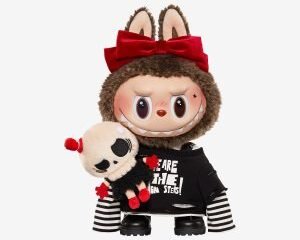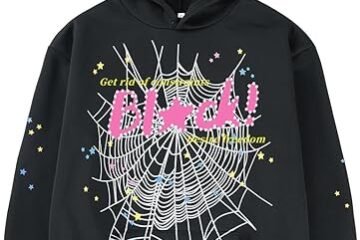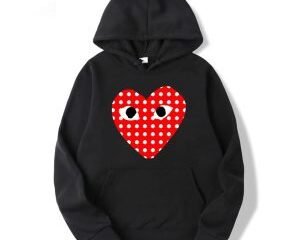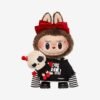Uncovering the Story Behind Labubu’s Popularity in Canada
Description
In recent years, the world of designer toys has experienced a renaissance, and at the center of this cultural surge is one of the most curious and beloved characters— labubu Canada . Originally a niche art toy from Asia, Labubu has become a collector’s sensation, winning hearts and display shelves across the globe, including in Canada. But what makes this mischievous little creature so irresistibly popular? The answer lies in a fascinating blend of artistry, storytelling, and cultural resonance that transcends borders.
The Origins of Labubu
Labubu is the brainchild of the talented Hong Kong-based artist Kasing Lung, who first introduced the character under the popular toy brand POP MART. The whimsical creature, with its signature grin, exaggerated features, and mysterious charm, quickly became a symbol of the growing designer toy movement in Asia. Kasing Lung’s world is inspired by his own childhood imagination, European folklore, and the quirky aesthetics of fairy tales gone dark. Labubu, in particular, emerged as a mischievous forest spirit—a trickster who is both eerie and endearing.
Initially, Labubu’s popularity was confined to Asia, especially in Hong Kong, mainland China, and Japan. However, through the rise of social media, unboxing videos, and international conventions like DesignerCon and Toy Soul, the appeal of Labubu spread across continents. Canadian toy enthusiasts soon discovered the magic of this peculiar creature, igniting a passionate following that continues to grow.
The Allure of the Designer Toy Movement
To understand Labubu’s success in Canada, one must first grasp the allure of the designer toy movement itself. These toys are not mass-produced children’s items; they are collectible art pieces that combine craftsmanship, limited edition releases, and emotional storytelling. Each Labubu figure represents more than just a toy—it embodies the artist’s imagination and a sense of creative rebellion.
In Canada, where appreciation for visual arts, pop culture, and individuality runs deep, designer toys have found a particularly receptive audience. Canadian collectors, many of whom grew up surrounded by Western animation and Japanese pop culture, appreciate the fusion of influences that Labubu represents. The limited-edition nature of each release also taps into the thrill of collecting—where owning a rare Labubu figure feels like possessing a piece of contemporary art.
Social Media and Community Influence
One of the biggest factors behind Labubu’s rising popularity in Canada is the vibrant online community that surrounds it. Instagram, TikTok, and Facebook groups have become hubs for collectors to share their latest finds, trade rare figures, and discuss upcoming drops. The hashtag #Labubu is filled with creative photography, fan art, and emotional stories from fans who see a bit of themselves in the character’s quirky charm.
Social media algorithms have played a crucial role in amplifying this community. Canadian influencers and toy collectors, particularly those who specialize in designer toys or kawaii culture, have showcased Labubu figures in aesthetically curated videos and posts. These visuals resonate with a generation that values authenticity, nostalgia, and artistic expression.
Moreover, local pop culture conventions like Fan Expo Canada and Anime North have begun to feature vendors and booths dedicated to designer toys, giving fans a chance to experience Labubu in person. These conventions create spaces where the online fandom transforms into real-life connections, further strengthening the community around the brand.
Emotional Resonance and Nostalgia
Another secret behind Labubu’s charm lies in its emotional depth. Though small in size, Labubu’s wide grin and expressive eyes evoke a complex mix of emotions—innocence, mischief, and melancholy. For many collectors, Labubu is more than just a toy; it’s a reminder of childhood wonder and imagination.
Canadians, known for their deep appreciation of art that tells a story, are drawn to the emotional layers behind each figure. Kasing Lung’s designs often carry subtle narratives, with each series exploring different moods or environments—from forest spirits and snow creatures to cosmic wanderers. This storytelling aspect gives collectors a sense of connection and meaning beyond the object itself.
In a world increasingly dominated by digital entertainment, holding a tangible piece of art like Labubu brings a comforting sense of nostalgia. Many Canadian collectors view these toys as a form of mindful escapism—a way to disconnect from screens and reconnect with something imaginative and tactile.
Cultural Crossover and Global Appeal
Labubu’s success in Canada also illustrates how art transcends cultural boundaries. Although the character was born in Asia, its themes—curiosity, individuality, and playfulness—resonate universally. The blend of Western fairy tale motifs with Eastern artistry creates a cross-cultural hybrid that feels both familiar and new.
Canada’s multicultural landscape has made it an ideal environment for such global art forms to flourish. Collectors from diverse backgrounds bring their own interpretations to the character, adding layers of meaning to the fandom. For example, some see Labubu as a mischievous fairy from European folklore, while others view it through the lens of East Asian mythology. This fluidity of meaning has helped Labubu integrate seamlessly into Canada’s creative scene.
The Collector’s Experience
The experience of collecting Labubu figures is, for many Canadians, an exciting journey in itself. POP MART’s blind box system—where buyers don’t know which figure they’ll get until they open the box—adds an element of surprise and anticipation. This format, reminiscent of trading cards or capsule toys, has captivated Canadian collectors who love the thrill of the unknown.
Retailers like Miniso Canada and specialty stores in cities such as Toronto, Vancouver, and Montreal have begun stocking Labubu collections, often selling out within days of release. Online resale markets are also booming, with rare Labubu figures fetching impressive prices among dedicated fans. This growing demand demonstrates not only the popularity of the character but also the evolution of designer toys into a legitimate collectible art form.
The Role of POP MART in Global Expansion
POP MART, the company behind Labubu, deserves credit for its strategic global expansion. By collaborating with local artists, hosting international pop-up stores, and building a strong online presence, the brand has turned its once-niche products into a mainstream cultural phenomenon. In Canada, POP MART’s collaborations with local influencers and pop culture events have helped bridge the gap between Asian toy culture and Western audiences.
Furthermore, POP MART’s branding emphasizes storytelling and artistry over commercialism, which appeals to Canadian sensibilities. Each collection release is accompanied by a carefully crafted narrative and design concept, transforming each Labubu into a piece of collectible storytelling.
The Future of Labubu in Canada
Looking ahead, Labubu’s presence in Canada shows no sign of fading. As the designer toy community continues to expand, and as more Canadians discover the artistry behind these miniature sculptures, Labubu’s charm will only deepen. With more collaborations, limited editions, and pop-up events likely to come, the character’s popularity could soon rival that of other major art toys like Bearbrick or KAWS.
Moreover, the growing interest in sustainable art, creative expression, and small-scale craftsmanship in Canada aligns perfectly with Labubu’s ethos. As Canadian artists and collectors continue to blur the line between play and art, Labubu stands as a symbol of what happens when imagination, design, and emotion come together in perfect harmony.
Conclusion
Labubu’s popularity in Canada is more than a Labubu Bag passing trend—it’s a cultural movement that reflects a deep appreciation for creativity, individuality, and storytelling. What began as a quirky forest spirit from the imagination of a Hong Kong artist has blossomed into an international icon of modern art and design. For Canadians, Labubu represents the joy of collecting, the nostalgia of childhood, and the universal language of art that knows no borders.
As Labubu continues to grin from shelves and collectors’ displays across the country, one thing is certain: this mischievous little creature has found a permanent home in the hearts of Canadian fans—and its story is only just beginning.
Location
Report abuse
Report abuse
Featured listings


More from this user
You may also like...




















